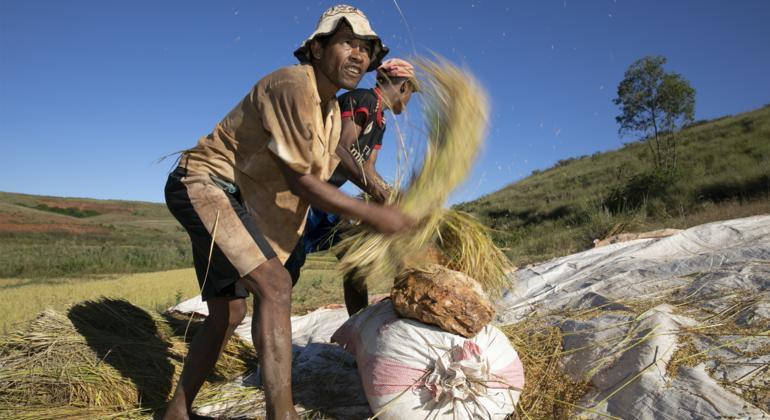The new joint report, Climate change and heat stress in the workplaceUnderline assembly risks as climate change feeds the longest, more extreme and more frequent thermal waves.
Emphasizing that workers in agriculture, construction and fishing are already suffering from the impacts of dangerous temperatures, the report indicates that vulnerable groups in developing countries, including children, older adults and low -income communities, face growing dangers.
“Heat stress is already damaging the health and livelihoods of billions of workers, especially in the most vulnerable communities.“Said Dr. Jeremy Farrar, deputy director general for health promotion, disease prevention and care.
“This new guide offers evidence -based practical solutions to protect livesReduce inequality and build more resistant labor forces in a world of heating, ”he added.
Based on five decades of research, the report highlights how the increase in temperatures is reaching health and productivity.
WMO confirmed that 2024 was the hottest year recorded, at 1.55 degrees Celsius above preindustrial temperatures, and With maximum diurnal ones greater than 40 ° C, they become common, and in some areas, even greater than 50 ° C.
“Occupational heat stress has become a global social challengeThat it is no longer limited to countries located near Ecuador, as highlighted by the recent heat wave in Europe, “said Ko Barrett, UMM General Secretary of the OMM.” The protection of extreme heat workers is Not only an imperative of health but an economic need. “
Alarming findings
The report details how extreme heat is remodeling the world of work. Find that workers’ productivity falls 2 to 3 percent for each grade above 20 ° C.
The health consequences are of high range, which include heat strokes, dehydration, renal dysfunction and neurological disorders. In general, almost half of the world’s population is now experiencing negative effects due to high temperatures.
Advance
Ask for urgent occupational action plans adapted to industries and regions, WHO and WMO guide include several recommendations:
- Develop specific occupational health policies based on the local climate and the vulnerabilities of the workforce.
- Prioritize protections for medium -age and older workers, those with chronic health conditions and individuals with less physical condition.
- Train health professionals, employers and workers to recognize and treat heat stress, which are often erroneously diagnosed.
- Involve workers, unions and local authorities in the configuration of heat health strategies.
- Promote affordable, sustainable and scalable solutions, together with innovation and new technologies.
- Strengthen research and monitoring to ensure that measures remain effective.
The orientation is based on the results of the International Labor Organization (ILO) that More than 2.4 billion workers are exposed to excessive heat worldwide, resulting in more than 22.85 million occupational injuries every year.
‘Critical milestone’
“This report represents a critical milestone in our collective response to the growing threat of extreme heat in the world of work,” said Joaquim Pintado Nunes, head of Oit Occupational Health and Safety and the work environment.
“Aligned with the ILO mandate to promote safe and healthy work environments as a fundamental right, it offers a solid and evidence -based guide to help governments, employers and workers face the growing risks of climate change.”
A call to action
Both UN agencies emphasize that addressing heat stress is essential to safeguard lives, livelihoods and economies. The Guide supports the UN Sustainable Development Goals (SDG), urging a decisive action to protect vulnerable workers, reduce poverty and promote sustainable growth.
The urgent and coordinated action is no longer optional: it is essential, according to the report.




